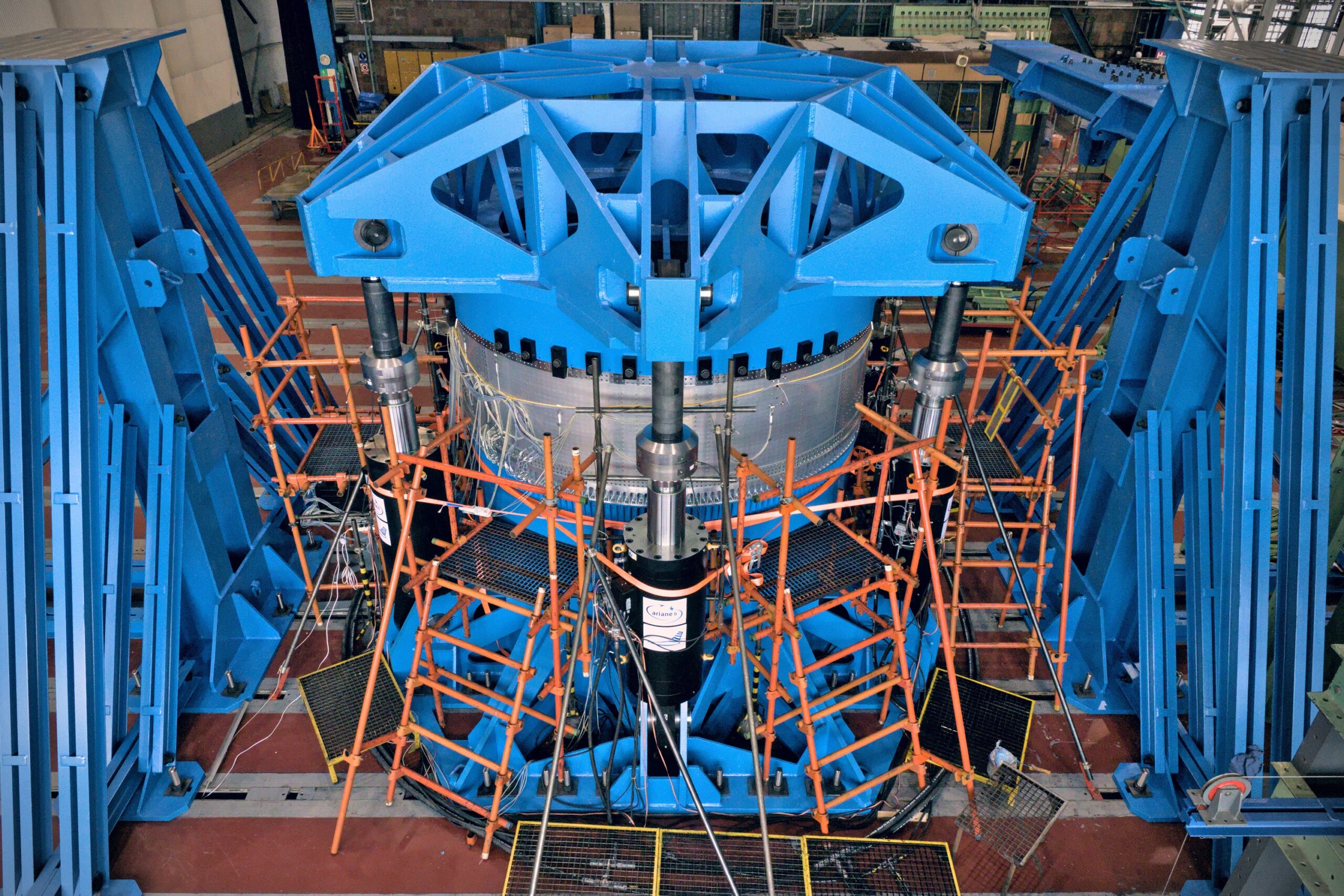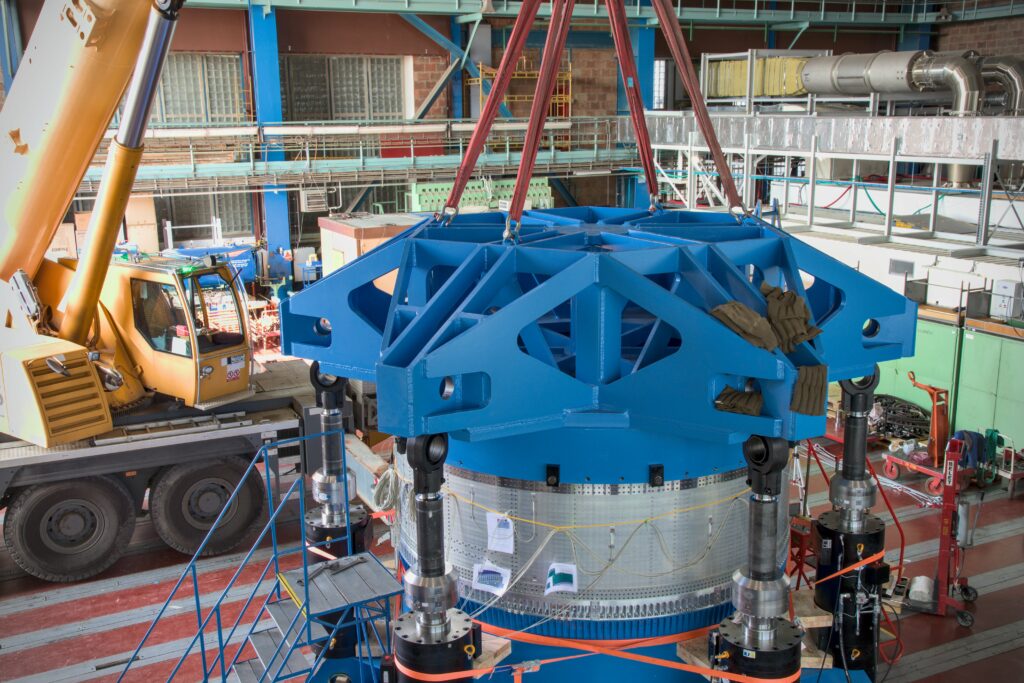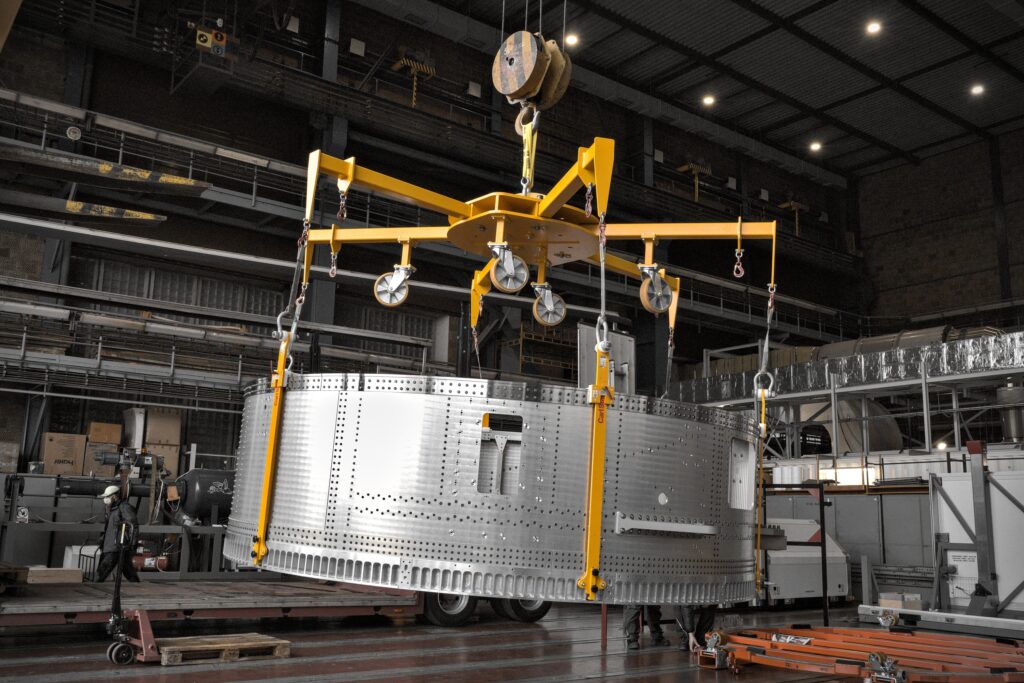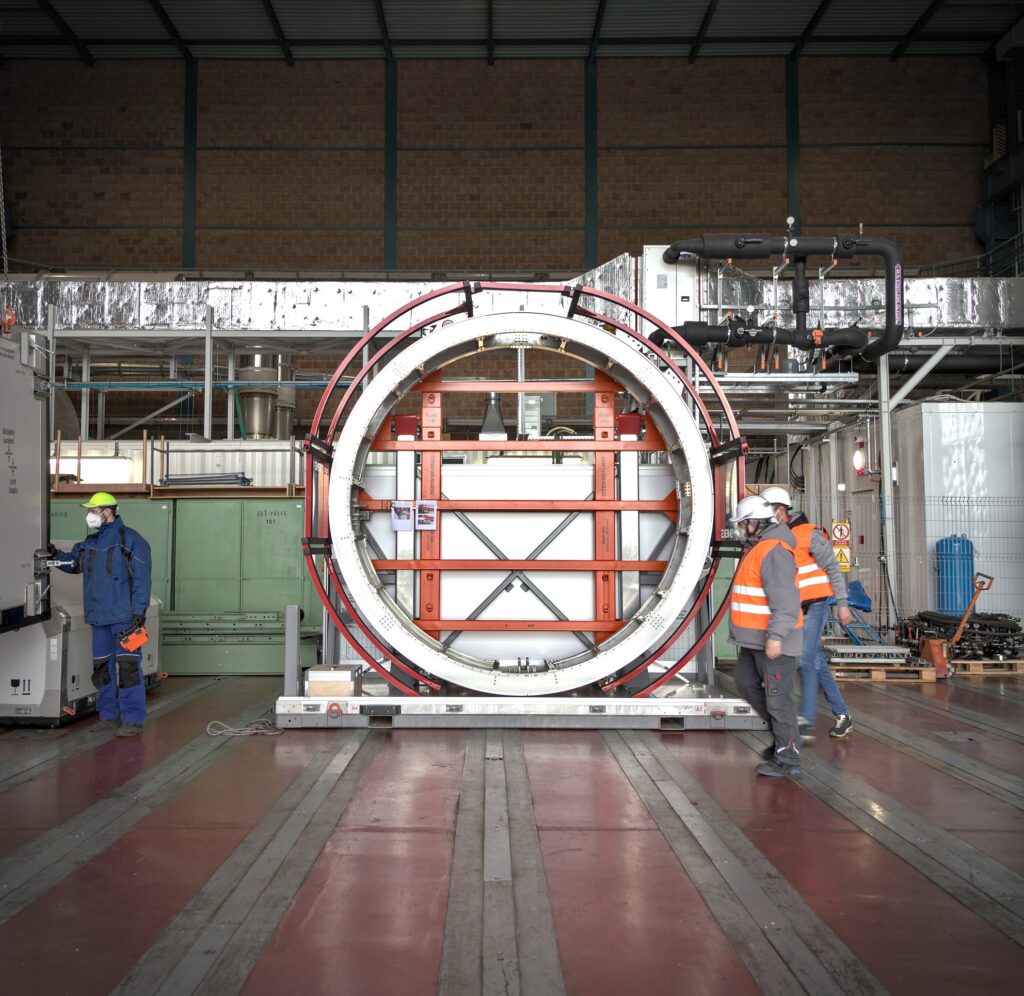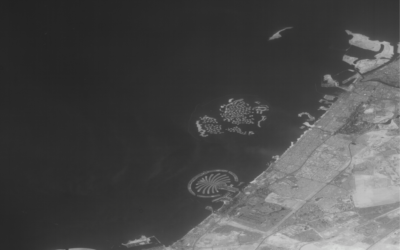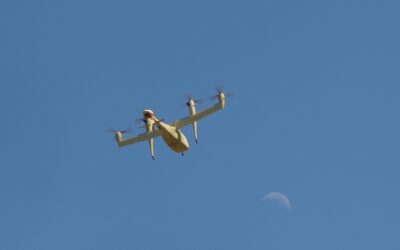At the Czech Aerospace Research Centre (VZLU), the tests of the Ariane 6 booster segment have started. The tested ESR Rear Skirt has two main characteristics: it carries the rocket’s own weight before lift-off and during the flight it transmits the thrust from the booster to the launcher.
The rear skirt must be extremely durable to bear the weight of the entire rocket and it is therefore an important structural element in terms of static load-bearing capacity. The entire Ariane 6 rocket can weigh up to 860 tons in a configuration with four boosters and its height is 63 meters. Depending on the orbit, the rocket can carry up to 11.5 tons of payload.
At VZLU, the stiffness and load-bearing capacity is verified in a specially designed test rig. The rocket segment was manufactured by ATC Space Klatovy and designed by MT Aerospace Augsburg.
The development of a completely new rocket is a unique process that takes place once in a generation, and therefore this test is also unique for VZLU. The test consists of several cases simulating the ground load as well as the flight conditions that will together prove the characteristics needed for qualification of the segment.
In one of the many load cases, the tested segment will be loaded with a load of almost 500 tons. The load is provided by 6 hydraulic cylinders, each of them can develop a force of up to 200 tons. The weight of the cylinders itself is 3.5 tons, which represents forces and weights that are used only for qualification within the launchers. The test rig in the maximum possible configuration occupies the floor area of 10×10 meters and is built to a height of about 8 meters. The test rig designers performed dozens of simulations and calculations to design an optimal and sufficiently dimensioned structure.
“Since most parts of the test equipment are unique and not commonly used, it was necessary to plan the whole test into last detail, harmonize individual activities such as coordination of subcontractors, coordination of teams within VZLU, ensure logistics of large components, technical equipment and manage customer requirements for the tests. Specialists from the various fields like stress analysis, electrical control, hydraulics, measurement, quality and other departments were involved within VZLU, and I must state that the whole process thoroughly tested our skills and at the same time improved our capabilities. ” Adds project leader Petr Franc from VZLU.
The tests are performed from June 2021 to October 2021 and are consisting from two main cases, namely the ground load and lift-off load with a large number of different configurations and settings.

